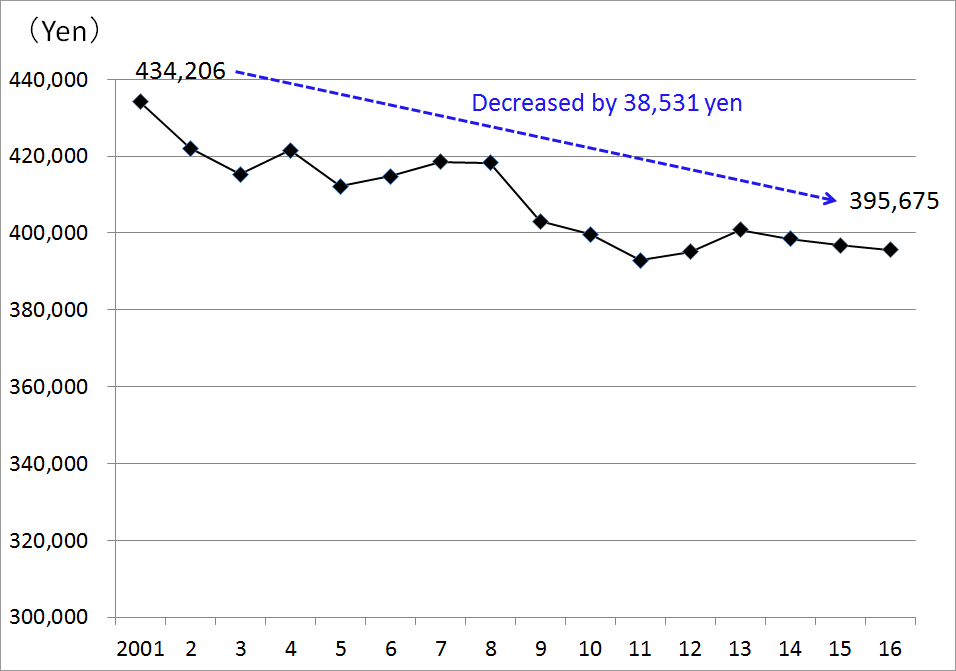Column Finance and the Social Security System 2018.05.28
【Aging, safety net and fiscal crisis in Japan】No.113: The Slow Growth in Disposable Income of Working Households
In Column No.97, I show that the employment rate of married females in the age range of 20 to 39 has risen since 2007. An overseas journalist who read this emailed to ask me the reason for this rise. To answer this question, we need to examine the income trends of working households with two or more people.
As shown in Figure 1, the average monthly income of male heads of working households with two or more people has fallen from 434,206 yen (US$ 3,947) in 2001 to 395,675 yen (US$ 3,597) in 2016. The decline after 2008 is especially large. It is likely that some wives started working to compensate for this decreased income.
As a result, the total revenue combined with a couple's income has increased by 13,128 yen (US $119) from 520,692 yen (US $4,734) in 2010, to 533,820 yen (US $4,853) in 2017 (Figure 2). However, the increase in disposable income during the same period is only 4,448 yen (US $40). This is because the burden on social insurance premiums for medical care, nursing care, and pensions has increased.
Figure 1: Average monthly income of male heads of working households with two or more people

Source: Ministry of Internal Affairs and Communications
Figure 2: Average monthly income and disposable income of working household with two or more people

